In today’s rapidly evolving technological landscape, a clear AI strategy is the bedrock of successful AI adoption. Without a well-defined plan, organizations risk misallocating resources and missing out on the transformative potential of AI. A robust AI strategy not only aligns AI initiatives with business objectives but also ensures that the technology is deployed effectively across the organization.
Defining a Clear AI Strategy
A comprehensive AI strategy should encompass several key elements. First, it should identify areas where AI can create the most value, such as enhancing operational efficiency, driving innovation, or improving customer experiences. Cybersecurity, infrastructure optimization, and data management are often top priorities for AI deployment. Additionally, the strategy should outline a financial plan that prioritizes AI investments and allocates the necessary budget for implementation and scaling.
Moreover, a clear AI strategy involves setting measurable goals and defining metrics to track the impact of AI initiatives. This includes establishing processes to regularly review and adjust the strategy based on performance data and evolving business needs. By having a well-defined AI strategy, organizations can navigate the complexities of AI adoption and maximize the technology’s benefits.
Building Robust Infrastructure to Support AI
Robust infrastructure is crucial for supporting AI workloads and ensuring seamless integration of AI technologies into business operations. However, many organizations face significant challenges in this area. According to recent research, a substantial number of companies feel only moderately prepared to accommodate AI technologies, highlighting the need for infrastructure improvements.
Key components of AI-ready infrastructure include adequate computational power, optimized network performance, and enhanced cybersecurity capabilities. Organizations must invest in scalable and flexible infrastructure solutions that can handle the increasing demands of AI workloads. This includes procuring data center GPUs, improving compute resource allocation, and enhancing data center security to prevent sophisticated cyber threats.
Investing in new and modern technology is essential for building AI-ready infrastructure. Organizations should also focus on hiring skilled talent to manage and maintain these systems. Outsourcing IT infrastructure to third-party providers can be a viable option for companies looking to quickly scale their infrastructure capabilities. By addressing infrastructure challenges, businesses can create a solid foundation for AI adoption and ensure the technology’s effective deployment.
Effective Data Management for AI Initiatives
Data is the lifeblood of AI, and effective data management is critical for successful AI initiatives. Despite the growing recognition of data’s importance, many organizations struggle with data fragmentation, inconsistencies, and accessibility issues. To fully leverage AI, businesses must establish strong data management practices that ensure data quality, security, and accessibility.
A key aspect of data management is implementing robust data frameworks that maintain data consistency and traceability. This includes setting up data stewardship roles and responsibilities to oversee data governance and ensure compliance with relevant regulations. Additionally, organizations should focus on integrating analytics tools with data sources and AI platforms to streamline data flows and enhance data accessibility.
Another critical challenge is the talent gap in data management. Many organizations lack skilled professionals with expertise in data science and analytics. Investing in talent development and upskilling existing staff can help bridge this gap and improve data management capabilities. By addressing data management challenges, organizations can create a solid data foundation for AI and drive more effective AI initiatives.
Addressing Talent Shortages in AI
The rapid pace of AI development has led to a significant talent shortage in the field. Many organizations struggle to find qualified candidates with the right skill sets to manage and deploy AI technologies. This talent gap poses a major hurdle to AI readiness and can hinder the successful implementation of AI initiatives.
To address talent shortages, organizations should consider a multi-faceted approach. One solution is to onboard contractors and external vendors to fill immediate talent gaps. This can provide a quick fix while allowing businesses to continue their AI projects without significant delays. However, relying solely on external talent is not a sustainable long-term solution.
Investing in internal talent development is crucial for building a skilled workforce capable of managing AI technologies. Organizations should create continuous learning opportunities for their staff, encourage cross-functional collaboration, and provide upskilling and reskilling programs. Public-private partnerships and collaborations with educational institutions can also help develop a pipeline of AI talent for the future.
By addressing talent shortages through a combination of external and internal strategies, businesses can build a robust AI workforce and enhance their readiness for AI adoption.
Overcoming Cultural Resistance to AI Adoption
Cultural resistance is a common challenge that organizations face when adopting AI. Employees and stakeholders may have concerns about the impact of AI on their jobs and roles, leading to resistance and reluctance to embrace the technology. Overcoming this resistance is essential for successful AI integration and requires a proactive approach to change management.
One effective strategy is to foster a pro-AI organizational culture by highlighting the benefits of AI and addressing employees’ concerns. Organizations should communicate the value that AI can bring, such as improving efficiency, driving innovation, and enhancing customer experiences. Providing necessary support and resources for upskilling and reskilling can help employees feel more confident and optimistic about AI’s impact on their jobs.
Engaging leadership and middle management is also crucial for driving cultural change. Leaders should actively champion AI initiatives and demonstrate their commitment to AI adoption. Change management plans should be comprehensive and involve regular training, awareness programs, and open discussions about AI’s potential and challenges.
By fostering a supportive and pro-AI culture, organizations can reduce resistance and encourage employees to embrace AI technologies, paving the way for successful AI integration.
Actionable Recommendations for Enhancing AI Readiness
To enhance AI readiness and fully leverage AI’s transformative potential, organizations should focus on several key areas. First, investing in scalable and adaptive infrastructure is essential for supporting AI workloads. This includes procuring modern technology, improving compute resource allocation, and enhancing cybersecurity measures to protect AI systems.
Effective data management is another critical area. Organizations should implement robust data governance frameworks, integrate analytics tools, and improve data accessibility. Addressing talent shortages through external hiring and internal talent development is also crucial for building a skilled AI workforce.
Fostering a pro-AI organizational culture is essential for overcoming cultural resistance. Communicating the benefits of AI, providing support for upskilling, and engaging leadership in AI initiatives can help create a supportive environment for AI adoption.
Finally, organizations should regularly review and adjust their AI strategies to align with evolving business goals and technological advancements. By focusing on these key areas, businesses can enhance their AI readiness and fully capitalize on AI’s transformative potential.
For those interested in delving deeper into AI readiness and how it can benefit your organization, Robinett Consulting is here to help. Reach out to us to address your AI readiness questions and explore tailored solutions that align with your business objectives.
References:
- Brynjolfsson, E., & McAfee, A. (2014). The Second Machine Age: Work, Progress, and Prosperity in a Time of Brilliant Technologies. W. W. Norton & Company.
- Bughin, J., Hazan, E., Ramaswamy, S., Chui, M., Allas, T., Dahlström, P., Henke, N., & Trench, M. (2017). Artificial Intelligence: The Next Digital Frontier? McKinsey Global Institute. Link
- Davenport, T. H., & Ronanki, R. (2018). Artificial Intelligence for the Real World. Harvard Business Review. Link
- Gartner. (2022). Top Strategic Technology Trends for 2022. Link




